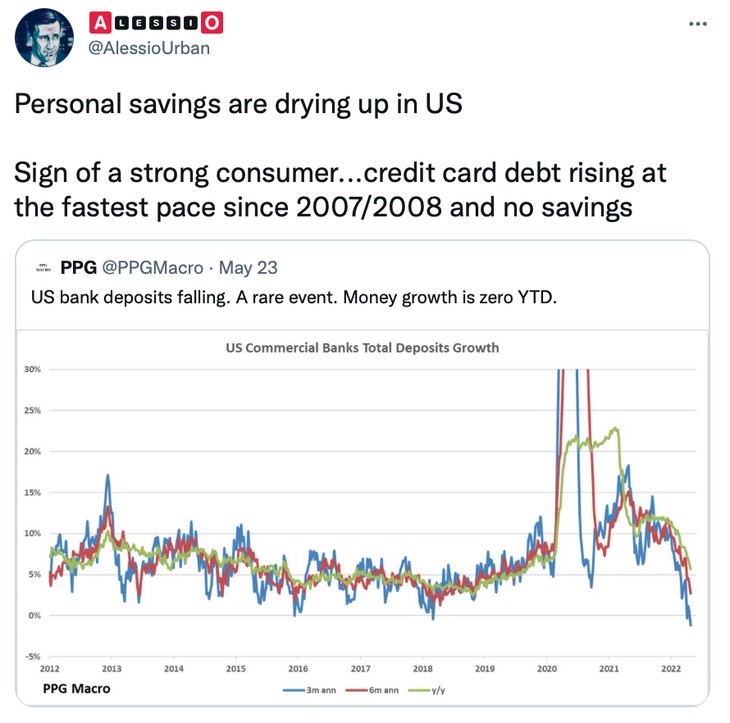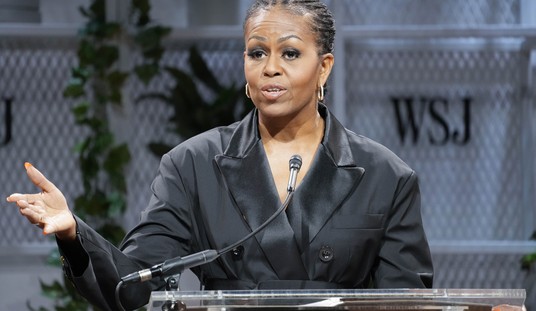Good news, comrades! Your inflation ration for April decreased for the first time in a year — but only if you compare it to last April’s “unexpectedly” high inflation rate.
The Wall Street Journal, where people used to go for better financial reporting than this, parroted the Fed’s shaky claim that consumer price increases “decelerated slightly in April.”
The so-called core PCE index—which excludes volatile food and energy prices—increased 4.9% in April from a year ago, down from 5.2% in the year through March. On a monthly basis, core prices rose a seasonally adjusted 0.3%, the same as in February and March. That pace marked a moderate slowdown from the average monthly pace for the previous four months.
If I had a GIF of someone looking down into their empty wallet and then looking back up with a total “What the hell?” expression on their face, I’d post it right here.
That core inflation rate that the Fed is crowing about having decelerated last month is an annualized rate, not a monthly rate. To get the truth, you have to look back at what was happening a year ago.
March of 2021 — right after Presidentish Joe Biden and the Democrat-controlled Congress flooded the economy with another $2,000,000,000,000 in funny money — is when inflation began in earnest. It was 2.6% in March of last year, higher than expected:
Tuesday’s data comes amid heated debate in Washington about whether President Biden’s ambitious fiscal spending agenda—when combined with an upcoming boom in consumer spending—will overheat the economy and push prices to unsustainable levels.
Well, I guess we know which side won that debate.
This April’s “deceleration” just isn’t so in comparison to the same month last year when inflation first started to bite:
The Consumer Price Index, which measures a basket of goods as well as energy and housing costs, rose 4.2% from a year earlier. A Dow Jones survey had expected a 3.6% increase. The month-to-month gain was 0.8%, against the expected 0.2%.
Excluding volatile food and energy prices, the core CPI increased 3% from the same period in 2020 and 0.9% on a monthly basis. The respective estimates were 2.3% and 0.3%.
Inflation is up — way up — from this time last year, and it wasn’t great this time last year.
Recommended: Sinema Signals She Won’t Bust Filibuster for Gun Control
What we’re all feeling now is what it’s like to be on the wrong side of the compound interest formula. Instead of watching our savings grow at an accelerating rate, we’re watching our purchasing power decline faster and faster.
Consumer spending was actually up a bit last month but only because Americans dipped into their savings to finance the increase:
Consumer spending rose by a seasonally adjusted 0.9% last month, the Commerce Department said Friday. The saving rate fell to 4.4%, the lowest in 14 years, from a downwardly revised 5% the prior month, suggesting that many Americans are tapping their savings to offset cost increases from high inflation.
If your household is anything like mine, you spent more money but brought home less stuff — little things like food and clothes for our growing boys.
It’s with more than a little gloom and doom that I remind you that our personal savings rate hasn’t been this low since right before the Great Recession.

The quote you’re looking for is this one: “If something cannot go on forever, it will stop.”
Actually, we aren’t all feeling the pinch.
In fact, Washington is flush with money — your money:
The Treasury expects to feed on a 28% surge in individual income taxes this year and another spurt in 2025 when the Trump tax cuts expire, according to a new budget analysis presented to Congress on Thursday.
The latest Congressional Budget Office report revealed expectations of $2.6 trillion in individual income taxes this year, up from $2 trillion last year.
Not only is that the highest ever, but it is also the biggest share of gross domestic product since income taxes began.
I could have sworn someone very important telling me that paying my fair share would ease inflation, but rising prices, Washington’s unprecedented revenues, and Americans’ empty wallets give lie to that claim.
We’re in for a bumpy ride, and it doesn’t help when papers like the WSJ help the feds fudge the facts.










Join the conversation as a VIP Member